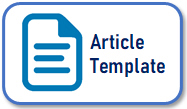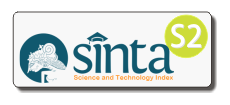The Role of Intellectual Capital in Mediating the Impact of Knowledge Management and Innovation in the Halal Batik Industry of Yogyakarta
DOI:
https://doi.org/10.14421/grieb.2024.121-02Abstract
This study aims to investigate the role of intellectual capital in mediating the impact of knowledge management and motivation on halal small and medium-sized enterprises (SMEs) in the batik industry in Yogyakarta. Research on the mediating role of intellectual capital is still relatively novel in Indonesia. The study of the batik industry is particularly compelling, given that batik is an intangible asset recognized as UNESCO's cultural heritage. However, there is a noticeable decline in export value year by year. By focusing on halal batik SMEs, this study explores how halal certification can enhance these businesses' market appeal and export potential. The initial step of this research involves collecting data related to the research variables by distributing questionnaires to batik entrepreneurs in Yogyakarta. Subsequently, tests are conducted using PLS to analyze the results, examining the role of intellectual capital in mediating the impact of knowledge management and motivation on halal SMEs in the batik industry in Yogyakarta. The findings provide insights into how intellectual capital can influence the sustainability and growth of batik enterprises, offering strategies to counteract the declining export values and enhance the overall performance of these culturally significant businesses.
Originality/Value: Unlike prior research, which focuses on global views and big industry, this study provides valuable insights for halal SMEs, particularly in the batik industry. The findings aim to elucidate how intellectual capital impacts the sustainability and growth of halal batik enterprises. It seeks to offer strategies to mitigate declining export values and enhance the overall performance of these culturally significant businesses, with a particular emphasis on leveraging the opportunities presented by halal certification.
Downloads
 Abstract viewed: 516 times
|
Abstract viewed: 516 times
|
 PDF downloaded = 323 times
PDF downloaded = 323 times
References
Ali, A., Fazaila S., and Yassir M. (2023). Knowledge Management and Motivation Management: Important Constituents of Firm Performance Knowledge Management and Motivation. (January).
Alnatsheh, A. Y., Karaatmaca, A. G., & Çavuşoğlu, B. (2023). Intellectual Capital and Organizational Innovation: Examining the Mediation Role of Knowledge Sharing on the Palestinian Universities during the COVID-19 Pandemic. Sustainability (Switzerland), 15(4). https://doi.org/10.3390/su15043673
Alnatsheh, Amani Y., Ayşe G. K., and Behiye Ç. (2023). Intellectual Capital and Organizational Innovation: Examining the Mediation Role of Knowledge Sharing on the Palestinian Universities during the COVID-19 Pandemic. Sustainability (Switzerland), 15(4).
Asghar, Nabila et al. (2023). Managerial Skills, Technology Adaptation and Firm Performance: Mediating Role of Process Innovation and Product Innovation. Cogent Business and Management, 10(3). https://doi.org/10.1080/23311975.2023.2281485.
Attar, Mujid, Kyeong K., and Osama S. (2019). Knowledge Sharing Practices, Intellectual Capital and Organizational Performance. Proceedings of the 52nd Hawaii International Conference on System Sciences: 5578–87.
Barney. (1991). Firm Resources and Sustained Competitive Advantage. Journal of Management, 17(1): 99–120.
Beltramino, N.S., García P., D. and Valdez J. (2020). The structural capital, the innovation and the performance of the industrial SMES, Journal of Intellectual Capital, 21(6), 913-945. https://doi.org/10.1108/JIC-01-2019-0020
Bontis, N. (1998). Intellectual Capital: An Exploratory Study That Develops Measures and Models. Management Decision, 36(2): 63–76.
Brix, J.. (2020). Building Capacity for Sustainable Innovation: A Field Study of the Transition from Exploitation to Exploration and Back Again. Journal of Cleaner Production, 268 122381. https://doi.org/10.1016/j.jclepro.2020.122381.
Chang, W., Franke, G. R., & Lee, N. (2016). Comparing reflective and formative measures: New insights from relevant simulations. Journal of Business Research, 69(8), 3177-3185.
Chen, Yufeng, and Yanbai M. (2021). Does Green Investment Improve Energy Firm Performance Energy Policy, 153(121): 112252. https://doi.org/10.1016/j.enpol.2021.112252.
Coltman, T., Devinney, T. M., Midgley, D. F., & Venaik, S. (2008). Formative versus reflective measurement models: Two applications of formative measurement. Journal of Business research, 61(12), 1250-1262.
Darroch, J. (2005). Knowledge Management, Innovation and Firm Performance. Journal of Knowledge Management, 9(3): 101–15.
Dost, M., Badir, Y. F., Ali, Z., & Tariq, A. (2016). The impact of intellectual capital on innovation generation and adoption. Journal of Intellectual Capital, 17(4), 675-695. https://doi.org/10.1108/JIC-04-2016-0047
Efendi, S. and Edy R. (2021). The Role of Intellectual Capital, Intrinsic Motivation, and Competence on Service Performance: Empirical Studies at Jakarta Private Universities. International Journal of Science and Society, 3(3): 170–85.
Fornell, C., & Larcker, D. F. (1981). Evaluating structural equation models with unobservable variables and measurement error. Journal of marketing research, 18(1), 39-50.
Grant, R. M. (1991). The Resource-Based Theory of Competitive Advantage: Implications for Strategy Formulation. California Management Review, 33(3), 114–135. https://doi.org/10.2307/41166664
Hair, J. F., Hult, G. T. M., Ringle, C. M., Sarstedt, M., Danks, N. P., and Ray, S. (2021). Partial Least Squares Structural Equation Modeling (PLS-SEM) Using R: A Workbook. Springer. https://doi.org/10.1007/978-3-030-80519-7
Handayani, R. (2020). The Effect of Human Capital on Batik SMEs Innovation: The Mediating Role of Adaptive Creativity. Binus Business Review, 11(2), 105-113. https://doi.org/10.21512/bbr.v11i2.6178
Henseler, J., Ringle, C. M., & Sinkovics, R. R. (2009). The use of partial least squares path modeling in international marketing. In New challenges to international marketing (pp. 277-319). Emerald Group Publishing Limited.
Housel, Thomas J., & Sarah K. Nelson. (2005). Knowledge Valuation Analysis: Applications for Organizational Intellectual Capital. Journal of Intellectual Capital, 6(4): 544–57.
Karchegani, M. R., Sofian, S., & Amin, S. M. (2013). The relationship between intellectual capital and innovation: A review. International Journal of Business and Management Studies, 2(1), 561–581.
Kennedy, P. 2023. Digitalisasi Pendidikan: Artificial Intelligence Di Pendidikan Tinggi. Prosiding Nasional 2023 Universitas Abdurachman Saleh Situbondo: 205–15.
Kianto, Aino, Josune S., and Nekane A. (2017). Knowledge-Based Human Resource Management Practices, Intellectual Capital and Innovation. Journal of Business Research, 81: 11–20. http://dx.doi.org/10.1016/j.jbusres.2017.07.018.
Lee, Yeunjae, Weiting T., Jo Y. Queenie Li, and Ruoyu S. (2020). Enhancing Employees’ Knowledge Sharing through Diversity-Oriented Leadership and Strategic Internal Communication during the COVID-19 Outbreak. Journal of Knowledge Management, 25(6): 1526–49.
Li, Y., Song, Y., Wang, J., & Li, C. (2019). Intellectual capital, knowledge sharing, and innovation performance: Evidence from the Chinese construction industry. Sustainability, 11(9), 2713.
Lin, C. H., Yang, H. L., & Liou, D. Y. (2009). The impact of corporate social responsibility on financial performance: Evidence from business in Taiwan. Technology in society, 31(1), 56-63.
Lundvall, Bengt Ke, and Peter N. (2007). Knowledge Management and Innovation Performance. International Journal of Manpower, 28(3–4): 207–23.
Mohajan, Haradhan Kumar. (2019). Knowledge Sharing among Employees in Organizations. Journal of Economic Development, Environment and People, 8(1): 52.
Moro V. R. (2019). The Valuation of Intangible Assets: An Introduction. SSRN Electronic Journal.
Nissa, F., Yaqin, N., & Budiastuti, S. (2024). The Influence of Intellectual Capital, GCG, and ROA on Bank Performance. Jurnal EMT KITA, 8(4), 1626-1638.
Roos, J. (1998). Exploring the Concept of Intellectual Capital (IC). Long Range Planning, 31(1): 15-53.
Ryu, D., Baek, K.H., and Yoon, J. (2021). Open Innovation with Relational Capital, Technological Innovation Capital, and International Performance in SMEs. Sustainability, 13: 3418. https://doi.org/ 10.3390/su13063418
Sun, Z., Pellegrini, M. M., Wang, C., & Yu, Z. (2021). How does government support promote firms' intellectual capital? An empirical analysis of micro-mechanisms. Journal of Intellectual Capital, 22(6), 1000-1029.
Weerawardena, J. (2003). Exploring the role of market learning capability in competitive strategy. European journal of marketing, 37(3/4), 407-429.
Wetzels, M., Odekerken S. G., and Oppen, C. (2009), Using PLS path Modeling for Assessing Hierarchical Construct Models: Guidelines and Empirical Illustration. MIS Quarterly, 33(1), 177–195.
Wu, X., & Sivalogathasan, V. (2013). Intellectual capital for innovation capability: A conceptual model for innovation. International Journal of Trade, Economics and Finance, 4(3), 139-144. https://doi.org/10.7763/IJTEF.2013.V4.274
Xu, J., & Li, J. (2022). The interrelationship between intellectual capital and firm performance: evidence from China's manufacturing sector. Journal of Intellectual Capital, 23(2), 313-341.
Xu, Jinhong, and Wei Wei. (2023). A Theoretical Review on the Role of Knowledge Sharing and Intellectual Capital in Employees’ Innovative Behaviors at Work. Heliyon, 9(10): e20256. https://doi.org/10.1016/j.heliyon.2023.e20256.
Downloads
Published
Issue
Section
License

This work is licensed under a Creative Commons Attribution-ShareAlike 4.0 International License.
Global Review of Islamic Economics and Business is licensed under a
Creative Commons Attribution-ShareAlike 4.0 International License



















